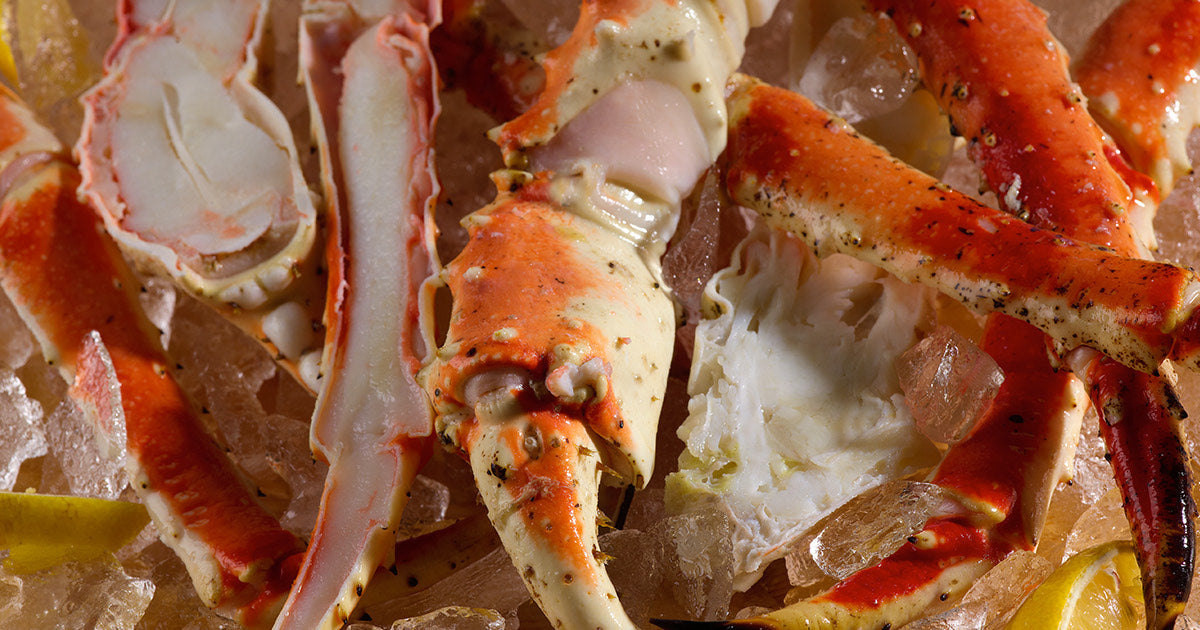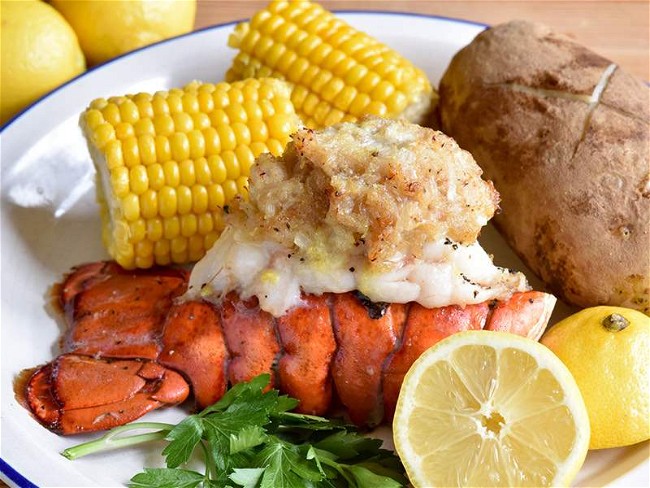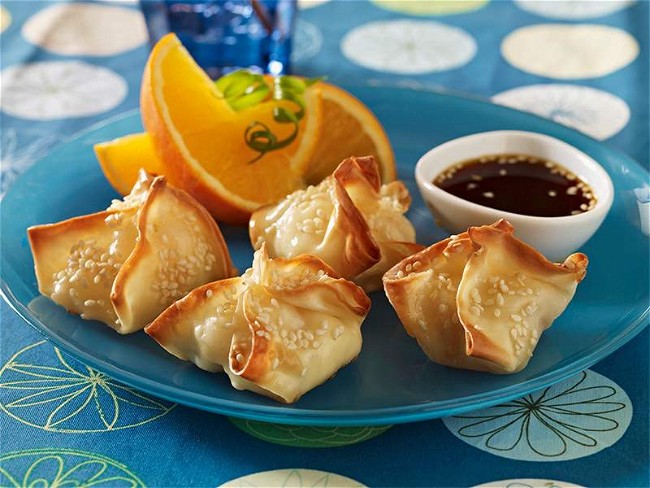Your Essential Guide to Crabs

There's something almost magical about the moment a steaming platter of crabs arrives at your table. From the theatrical crack of golden king crab legs to the communal joy of a backyard blue crab boil, crabs have a way of transforming any meal into a celebration and hands-on food experience. From the bustling crab houses of Maryland's Chesapeake Bay to the luxury dining rooms serving Alaskan king crab, these remarkable creatures have earned their place as some of America's most cherished seafoods.
What started as simple survival food for fishing families has blossomed into everything from memorable summer crab boils to the most elegant restaurant presentations, with Americans now consuming millions of pounds of crab every year.
We’re answering your most frequently asked questions about crabs with the help of our Head of Quality Control, Robert DiGregorgio. He’s sharing the different species of crabs, what makes them special, when and where you can find them, and how to pick the perfect crab for your next seafood experience.
- What Are Crabs?
- What Do Crabs Eat?
- What Does Crab Taste Like?
- Types of Crab
- Types of Crabmeat
- Is Crab Healthy?
What Are Crabs?
Crabs belong to a fascinating group of animals called decapod crustaceans, meaning they have ten legs and belong to the same family as lobsters and shrimp. What makes crabs special versus lobsters is their distinctive body design. Instead of the long tail you see on lobsters, crabs have evolved a broad, flattened shell with legs that tuck neatly underneath. This unique shape helps them scuttle sideways across ocean floors and squeeze into rocky crevices. Crabs’ shapes also contribute to quite a different picking and eating experience compared to their crustacean cousins.
Perhaps the most remarkable thing about crabs is how they grow. Unlike fish or mammals, crabs can't simply stretch their skin as they get bigger. Instead, they must completely shed their hard outer shell in a process called molting, then wait for a new, larger shell to harden around them. This incredible transformation is what gives us the delicacy of soft-shell crabs.
What Do Crabs Eat?
Crabs are nature's ultimate scavengers when it comes to their diets. Crabs feast on whatever the ocean provides—small fish that venture too close, mollusks they can crack open with powerful claws, other crustaceans, marine worms, and even algae and sea plants.
What Does Crab Taste Like?
Crabmeat has a sweet, mildly oceanic flavor that’s never “fishy” or overpowering. Its firm texture melts in your mouth, making crab a unique seafood to eat. Crabs can have slightly different flavor profiles because of their varied diets and habitats. Colder habitats and more shellfish-heavy diets tend to make crab sweeter, while shallower habitats and fish- or plant-based diets can impart brinier flavors onto the crabmeat. This is why crabs from different regions can taste distinctly different, even within the same species, giving each coastal area its own signature crab character.
Types of Crab
"What I love about working with different crab species is discovering how each one brings its own personality to the kitchen," DiGregorio shares. "From the buttery richness of king crab to the delicate sweetness of blue crab, every species has a story and occasion."
-
Golden King Crab (Lithodes aequispinus) represents one of the ocean's most prized treasures. These magnificent crustaceans, distinguished by their golden-bronze shells, inhabit the deep, icy waters off Alaska. Golden king crabs can grow up to 8 pounds and have a leg span of 4 feet.
Golden king crab meat offers an extraordinarily sweet, delicate flavor with a tender texture that melts in your mouth. Their snow-white flesh features beautiful pink streaks that make every presentation stunning. Their beauty and exceptional taste command premium prices, making them a symbol of special occasions and fine dining. While they’re often available frozen year-round, golden king crabs can sometimes be available fresh from late summer through early winter. - Red King Crab (Paralithodes camtschaticus) is the largest eaten species of crab, sometimes exceeding 10 pounds with leg spans stretching over 5 feet and shells measuring up to 11 inches across. Red king crab meat has an intensely sweet flavor with a firmer, meatier texture than golden king crab. The limited quota and dangerous winter harvesting conditions off Alaska's coasts contribute to red king crab's premium prices and legendary status among seafood enthusiasts.
- Queen Crab (Chionoecetes opilio) is often called opilio snow crab or simply snow crab. It brings exceptional quality to your table and is often more accessible than king crab. Queen crab is medium-sized, typically weighing 1-2 pounds with legs spanning 2-4 feet. Beyond their delicately flaky and sweet meat, queen crabs’ thin shells make the species one of the easiest to crack by hand and eat. These snow crabs have longer seasons than kings, running from late fall through spring, making them more accessible rather than just reserved for special occasions. The most coveted queen crabs are caught in Canada’s cold waters.
- Tanner Crab (Chionoecetes bairdi) is another species commonly labeled as snow crab or bairdi crab. Tanner crabs are larger than other snow crabs, reaching up to 5 pounds and a 5-foot leg span. While their claws and legs are proportionally larger than queen crabs, the tanner (bairdi) crab’s flavor profile is quite similar–subtly sweet and balanced with salt from the sea. These crabs typically command higher prices than queen crabs due to their larger size and lower catch volumes. Their season runs shorter than the queen crab, making them a sought-after specialty item.
- Blue Crab (Callinectes sapidus), sometimes called Chesapeake blue crab or Maryland crab, is America's most iconic crab species. Particularly beloved along the Eastern seaboard from the Chesapeake Bay to the Gulf Coast, blue crabs are far smaller than their king and snow crab cousins. Blue crabs usually measure up to 9 inches across and weigh around a half pound, featuring striking blue-green shells with distinctive blue claws that give them their name. Blue crab meat offers the sweetness of other crabs with a characteristic briny taste. Their body meat is white and flaky, while the claw meat has a brownish color with a slightly more robust flavor. When blue crabs molt into new shells, they become the beloved soft-shell crab that can be eaten whole. You'll find blue crabs most available during the summer months.
-
Stone Crab (Menippe mercenaria) stands unique in the seafood world as the only species where you'll find just the claws for sale, but never the whole crab or lump meat. These remarkable crustaceans typically weigh 1-2 pounds with shells measuring 3-5 inches across, inhabiting waters from Connecticut to Florida, though 99% of commercial harvest comes from Florida waters. Stone crab claws are a centerpiece for a seafood tower because of their impressive size and stunning red and white colors with black tips.
"What makes stone crabs so special is their regenerative harvesting," notes DiGregorio. "Fishermen take only a claw that’s at least 2¾ inches long and must return the live crab to the ocean, where it will regrow the claw for future harvest."
Stone crab’s sweetness and remarkably melty texture have ingrained the species in Florida's culinary identity. Stone crab season runs from October through May, and claws are commonly frozen for year-round availability. - Jonah Crab (Cancer borealis) has emerged as New England's answer to stone crab. Found in waters from Eastern Canada to Rhode Island, these crabs typically weigh 1-3 pounds with legs up to 9 inches long. Once considered a nuisance bycatch by lobstermen, Jonah crabs are now loved for their sweet and flaky claw meat that rivals stone crab at a more accessible price point. Closely related to Dungeness crabs of the West Coast, Jonah crabs feature robust shells and substantial claws that yield lots of meat per crab. As demand for stone crab alternatives grew, Jonah crab transformed from a lobsterman’s lunch into a commercial delicacy.
- Dungeness Crab (Metacarcinus magister) is cherished throughout the Pacific Coast from California to Alaska. These substantial crabs weigh up to 3 pounds with leg spans of up to 10 inches, featuring distinctive purple-tinged shells that turn bright orange-red when cooked. Dungeness crab meat offers a perfect balance of sweetness and salinity with a slightly firmer texture and higher meat yield per crab than East Coast varieties. Similar to the blue crab boils in Maryland, West Coast families have built traditions around Dungeness crabs, whose peak season runs from July until December.
About Soft-Shell Crabs
What are soft-shell crabs?
Soft-shell crabs aren't a different species at all. They're blue crabs caught during their incredible molting transformation. As crabs grow, they shed their hard shell and grow a new, larger one to fit their bodies. During this brief window, when the new shell remains soft and paper-thin, they become the delicacy we know as soft-shell crabs.
When are soft-shell crabs in season?
Soft-shell crab season typically runs from late spring through early fall, with peak availability during the warmest summer months when crabs molt the most. The exact timing can vary by region and water temperature, but you'll generally find the best selection from May through September.
How are soft-shell crabs harvested?
Harvesting requires perfect timing and careful monitoring. Crab fishermen hold blue crabs in special saltwater tanks, watching for signs that molting is about to begin. The moment a crab sheds its shell, it must be removed from the water immediately to prevent the new shell from hardening. This delicate, seasonal process explains why soft-shell crabs are rarer than your typical blue crab and command premium prices
What do soft-shell crabs taste like?
Soft-shell crabs offer a rich, buttery flavor with the signature sweetness of blue crab, plus the unique textural experience of edible shell that you simply can't get from any other seafood.
How do you eat soft-shell crabs?
You can eat the whole soft-shell crab, most commonly fried. Unlike regular crabs, where you fight with shells and crackers, soft-shell crabs are completely edible—shell and all. Soft-shell crabs shine with simple preparations that highlight their natural flavors. Frying creates a perfect contrast between crispy shell and tender meat, while grilling adds smoky notes that complement their sweetness. Sautéing with butter and herbs lets their delicate flavor take center stage, and they're even delicious simply steamed and served with lemon.
Types of Crabmeat
When you see "lump crabmeat" at the market, you're looking at chunks of pure white meat picked from the crab's body, rather than its legs. Lump crabmeat is the gold standard for crab cakes and elegant presentations that don’t require picking the meat yourself. Like many luxury seafoods, crabmeat is graded by quality and size, and each grade is perfect for different culinary experiences.
- Jumbo Lump crabmeat is the crown jewel of crabmeat. These large, pristine chunks come from the two powerful muscles that control the crab's swimming fins. With their impressive size and vibrant white color, jumbo lump is what you want to use for crab cocktails or any dish where the crabmeat needs to shine on its own.
- Super Lump combines broken pieces of jumbo lump with large body meat chunks. It offers the visual appeal of jumbo lump at a friendlier price, making it perfect for crab cakes and casseroles.
- Lump crabmeat blends broken jumbo lump pieces with smaller special-grade meat. This is the workhorse of the crabmeat world—ideal for stuffing recipes like stuffed mushrooms or lobster tails, and anywhere you want good-sized pieces without the premium price.
- Special consists of smaller white meat flakes from throughout the crab's body. Think of it as your utility player—perfect for soups, quesadillas, salads, and dishes where the meat gets mixed with other ingredients.
- Claw Meat brings something different to the table with its distinctive brown color and bolder, more robust flavor. This robust taste makes it fantastic for rich sauces, hearty dips and spreads, and soups where you want the crab flavor to stand up to other strong ingredients.
- Cocktail Claws are the first section of the claw with part of the shell removed, offering that same rich brown meat in an elegant, ready-to-eat presentation. Cocktail claws are usually served with the meat in a pre-cracked claw shell for elegant presentation and convenient eating.
- Leg Meat comes in two varieties: center and lower leg meat. Center leg crabmeat comes from the sections closest to the crabs’ bodies and is the largest whole piece of meat you will find on a crab. Lower leg crabmeat consists of thinner, more delicate strands of meat from the sections further from the crabs’ bodies.
How Are Crabs Harvested?
Most commercial crab fishing relies on specialized traps called crab pots—wire cages designed to let crabs crawl in easily but make escape much more difficult. Fishermen bait these traps and drop them to the ocean floor, then return hours or days later to haul them up and sort their catch.
Different species require unique approaches. King crab fishing involves massive pots in some of the world's most dangerous waters, while blue crab harvesting uses smaller traps in calmer coastal areas. The sustainable stone crab fishery operates entirely differently, with fishermen harvesting only claws and returning live crabs to regrow new claws.
Is Crab Sustainable?
Crab fisheries represent some of the world's most carefully managed seafood resources. Strict regulations govern every aspect of commercial crab fishing, from trap specifications to seasonal closures. Size restrictions prevent harvesting of juvenile crabs, while prohibitions on some egg-bearing females protect reproductive capacity. These regulations ensure healthy populations for future generations.
At Fulton Fish Market, we source our crabs exclusively from fisheries that meet rigorous sustainability standards. We work only with trusted producers who prioritize long-term ocean health, supporting responsible fishing practices that protect marine ecosystems while delivering the finest quality crabs to your table.
Is Crab Healthy?
Crab offers outstanding nutritional benefits, making it an excellent choice for healthy eating. It is high in protein, with 19g per 3.5oz serving, while remaining remarkably low in fat and calories, and containing zero carbohydrates. Beyond their high protein content, crabs deliver essential nutrients including vitamin B12, selenium, zinc, and phosphorus. Crabs are also rich in omega-3 fatty acids that support heart and brain health.
What Goes Well With Crab?
Crab's sweet, delicate flavor pairs beautifully with both simple and sophisticated pairings. Here are our favorite accompaniments, side dishes, and wine pairings for crabs:
Traditional Crab Accompaniments
-
Melted butter is the most common accompaniment for crab, and for good reason. It draws out the crab's natural sweetness without overwhelming its delicate flavors.
-
Fresh lemon adds bright acidity that perfectly balances rich crabmeat—essential for crab boils. It also helps cut through the salt and spices needed to season the rest of the ingredients.
-
Fresh herbs like chives, parsley, and tarragon complement crab without competing for attention, perfect for finishing butter sauces or garnishing elegant presentations at traditional crab boils.
- Spice seasonings like Old Bay are synonymous with crabs. Seasonings with celery salt, paprika, and black pepper are mainly necessary for the other ingredients of a crab boil, like corn and potatoes, but who can resist the taste of some extra spice on a freshly cooked crab?
Side Dishes For Crab
-
Corn on the cob offers sweetness that matches crab's natural flavors—a classic combination at crab boils and in chowder.
-
Macaroni and cheese provides creamy comfort that transforms crab into an indulgent, satisfying meal.
-
Roasted potatoes bring a starchy, earthy contrast and satisfying substance to any crab meal.
-
Fresh salads with light vinaigrettes make for refreshing palate cleansers before and during a crab feast.
- Crusty bread is simple yet perfect for soaking up butter and crab-infused sauces. The combination of a sourdough bread and crab is a quintessential bite of Northern California that you can bring to any crab experience.
Wine Pairings For Crab
-
Champagne and sparkling wine have bubbles that cleanse your palate, allowing you to enjoy celebratory crab meals to the fullest.
-
Sancerre provides elegant herbaceous notes and bright acidity that pair excellently with crab flavors without overwhelming your tongue.
- Albariño from Spain offers mineral notes and crisp acidity that complement crab's oceanic character.
Our Favorite Crab Recipes
Soft-Shell Crab Sandwiches Recipe
Soft-shell crab sandwiches are a convenient and tasty dish that is perfect for picnics and casual get-togethers.
Crab-Stuffed Lobster Tails Recipe
Enjoy this delicious recipe for Crab-Stuffed Lobster Tails that’s a guaranteed crowd pleaser.
Crab Rangoons with Orange Sauce Recipe
This easy recipe for Crab Rangoon puffs, stuffed with fresh jumbo lump crabmeat, are crispy fried perfection bursting with a creamy and savory flavor profile. A sweet & sour orange dipping sauce complements the rich flavors perfectly.
FAQs
Can dogs eat crab?
Many dogs can safely enjoy plain, cooked crabmeat as an occasional treat. However, crab isn't suitable for all dogs, and it should always be thoroughly cooked, completely shelled, and served without seasoning, butter, or garlic. Always consult your veterinarian before introducing new foods to your dog's diet.
How many crabs are in a bushel?
A standard bushel of blue crabs typically contains 60-80 crabs, depending on the crabs’ sizes. A bushel itself is an 8-gallon container in which you’ll often see blue crabs organized, used as a unit of measurement for selling small crabs instead of weight.
What are the differences between these crabs?
- Snow Crab vs. King Crab: King crab species are significantly larger and more expensive than queen crab and tanner (bairdi) crab species. King crab meat offers meatier textures with intense sweetness and meltiness when eaten, while snow crab meat provides more subtle flavors and easier-to-crack shells.
- Stone Crab vs. Jonah Crab: While both offer sweet, flaky meat from black tipped claws, stone crabs come from Florida's warm waters and command premium prices due to their legendary status and strict harvesting regulations. Jonah crabs from New England waters provide similar flavors and textures at a lower cost, making them an excellent stone crab alternative. The tasting notes differ slightly depending on who you ask, but stone crabs and Jonah crabs are winners in a seafood tower.
- Dungeness Crab vs. Snow Crab: Dungeness crab has a stout body with ample body meat and a milder flavor profile, compared to snow crab, which is known for their sweeter, longer leg meat and thinner shells that are easy to crack. Snow crabs are considered the more luxurious of these two, and preference is up to your taste buds.
What is imitation crab?
Imitation crab is processed fish that is shaped, flavored, and colored to resemble real crabmeat. The most common main ingredient in imitation crab is pollock due to its abundance and neutrality, which can take on additional flavors. While it provides a budget-friendly option for some dishes, imitation crab lacks the complex flavors, natural sweetness, and nutritional benefits of genuine crabmeat. "There's simply no substitute for the real thing," emphasizes DiGregorio. "Once you experience genuine crab, the difference is unmistakable."
How do you humanely kill a crab?
For live crabs, the most humane method to kill or dispatch them takes two easy steps. First, chill the crab in a saltwater ice slurry or a freezer to render the crab insensible to pain. Once the crab noticeably slows its movements, you can quickly cut off the front portion of the crab, about ¼ to ½ inch behind the eyes and mouth, with sharp kitchen shears. This method ensures quick, humane dispatch before cooking the crab.
What is pasteurized crab?
Pasteurized crab is crabmeat that is cooked through a pressurized heating process that keeps it at peak freshness for longer than fresh meat without compromising quality. Pasteurized crab is a convenient option for its prolonged freshness, and needs to be consumed within a few days of unsealing. If buying pasteurized crabmeat, be sure that it is responsibly sourced. You can learn more about finding sustainable seafood in our Demystifying Seafood Certifications blog.
Why is crabmeat sold cooked instead of raw?
Crabmeat is sold cooked for both safety and quality reasons. Unlike some seafood that can be safely eaten raw, crabmeat must be cooked immediately after harvest to prevent bacterial growth. The cooking process also makes it much easier to extract the delicate meat from the shell cleanly while offering the convenience of enjoying crabmeat right from the container or easily incorporating it into your favorite recipes.
Is crab kosher?
Crab is not a kosher seafood. According to kosher guidelines, seafood must have both fins and scales to be considered kosher, and crabs are crustaceans that have neither.
How does crab leg sizing work?
Crab legs are sized differently by species. Generally, the larger the individual legs or clusters, the more premium the price, and you should expect fewer (larger) pieces in your package.
For king crab legs, sizing is based on how many individual legs it takes to make up a 10-pound box. When you see "6/9" on a label, that means 6 to 9 legs fill the package. The smaller the numbers, the bigger each individual leg and the fewer to expect in a box.
Generally, you’ll see king crab legs categorized as:
- Super-Colossal (4/7): Largest available
- Colossal (6/9): Premium size
- Jumbo (9/12): Popular for special occasions
- Extra-Large (12/14): Great value
- Large (14/17): Most common retail size
- Medium (16/20): Budget-friendly option
Snow crab clusters follow a similar sizing principle but are typically sold by weight of the whole cluster of legs. Cluster weight ranges are commonly 3-5 ounces, 5-8 ounces, or 8+ ounces per cluster.



